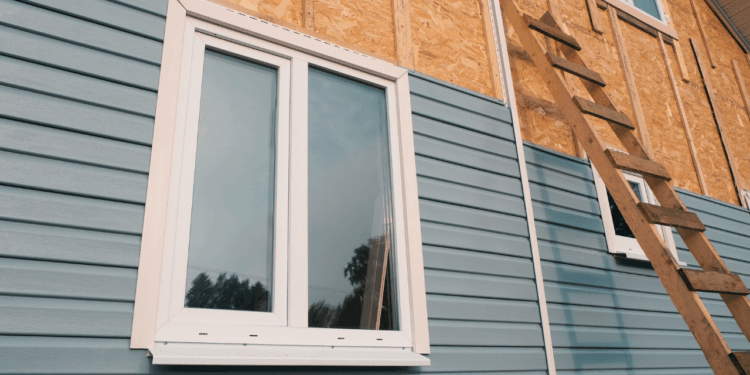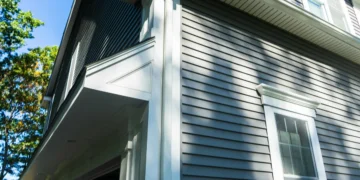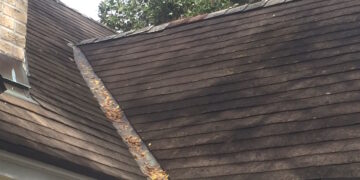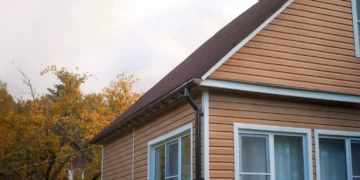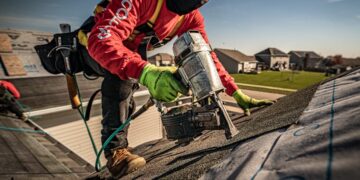Delving into the realm of insulated vinyl siding cost per square foot, this introduction aims to captivate readers with a wealth of information presented in an engaging manner. Let's embark on a journey filled with insights and practical advice on navigating the costs associated with this popular siding option.
In the following paragraphs, we will unravel the key factors influencing the cost, compare it with other materials, delve into installation considerations, and explore regional price differences.
Factors influencing insulated vinyl siding cost per square foot
Insulated vinyl siding cost per square foot can vary based on several factors that impact the overall pricing. Understanding these factors is essential for homeowners looking to invest in this type of siding.
Quality of the material
The quality of the insulated vinyl material used can significantly affect the cost per square foot. Higher quality materials with better insulation properties and durability will generally come at a higher price point compared to lower quality options.
Thickness and insulation R-value
The thickness of the siding and its insulation R-value are crucial factors influencing the cost. Thicker insulated vinyl siding with a higher R-value will provide better energy efficiency but will also be more expensive compared to thinner options with lower insulation properties.
Size of the project
The size of the project, including the total square footage of the area to be covered, will impact the overall cost per square foot. Larger projects will typically have lower costs per square foot compared to smaller projects due to economies of scale.
Installation complexities
The complexity of the installation process can affect the cost of insulated vinyl siding. Factors such as the presence of obstacles, intricate architectural details, or additional preparation work required can increase the overall cost per square foot.
Location and labor costs
The location of the project and local labor costs play a significant role in determining the overall cost. Areas with higher labor costs will naturally result in a higher cost per square foot for the installation of insulated vinyl siding.
Additional features and customization
Adding extra features or customization to the insulated vinyl siding, such as special finishes, colors, or textures, can also impact the cost per square foot. These additional features will add to the overall price of the siding installation.
Market demand and competition
Market demand and competition among suppliers and contractors can influence the cost of insulated vinyl siding. Higher demand or limited competition in a particular area can lead to higher prices per square foot compared to areas with more competitive pricing.
Average cost comparison with other siding materials
Insulated vinyl siding is a popular choice among homeowners due to its cost-effectiveness and durability. Let's compare the average cost per square foot of insulated vinyl siding with other siding materials to understand its value better.
Comparing Cost with Other Siding Materials
When comparing the cost of insulated vinyl siding per square foot with other popular siding materials such as wood, fiber cement, and aluminum, insulated vinyl siding tends to be more budget-friendly. On average, insulated vinyl siding costs around $4 to $12 per square foot, while other materials like wood can cost $6 to $15 per square foot, fiber cement can cost $5 to $12 per square foot, and aluminum can cost $3 to $6 per square foot.Moreover, the installation cost of insulated vinyl siding is relatively lower compared to other materials, making it a cost-effective choice for homeowners looking to enhance their property's exterior.
Advantages and Disadvantages of Choosing Insulated Vinyl Siding
Insulated vinyl siding offers excellent insulation properties, which can help reduce energy costs in the long run.
However, one disadvantage of insulated vinyl siding is that it may not have the same aesthetic appeal as wood or fiber cement siding.In terms of cost-effectiveness, insulated vinyl siding provides a good balance between initial cost and long-term savings. While the initial cost may be lower compared to other materials, the energy efficiency and low maintenance requirements of insulated vinyl siding can result in significant savings over time.
Homeowners can benefit from reduced heating and cooling costs, as well as minimal upkeep expenses, making insulated vinyl siding a financially wise investment.
Installation costs and considerations
Installing insulated vinyl siding involves various costs and considerations that can impact the overall project budget. Understanding these factors can help homeowners make informed decisions and potentially save money during the installation process.When it comes to installation costs, it is essential to consider the following breakdown:
Labor costs
Hiring professional contractors to install insulated vinyl siding can be a significant portion of the overall cost. Labor costs may vary depending on the region, complexity of the project, and experience of the installers
.
Material costs
In addition to the siding itself, other materials such as insulation, fasteners, and trim pieces are necessary for a successful installation. These additional materials can add to the total cost.
Equipment rental
Contractors may need to rent specialized equipment for the installation, which can impact the overall cost.
Permit fees
Obtaining necessary permits for the installation can also add to the expenses.Factors that influence installation expenses include:
Size of the project
Larger homes with more surface area will naturally require more materials and labor, leading to higher installation costs.
Complexity of the design
Intricate designs, multiple stories, and unique architectural features can increase the complexity of the installation, resulting in higher labor costs.
Preparation work
Any repairs or preparation work needed before installation, such as removing old siding or addressing structural issues, can add to the overall cost.
Contractor experience
Hiring experienced and reputable contractors may come at a higher price but can ensure quality installation and potentially reduce the risk of costly mistakes.To reduce installation costs without compromising quality, homeowners can consider the following tips:
- Get multiple quotes from different contractors to compare prices and services.
- Opt for off-peak seasons for installation when contractors may offer discounts.
- Consider DIY options for simple installations or tasks to reduce labor costs.
- Maintain open communication with the contractor and clarify any questions or concerns upfront to avoid unexpected costs during the project.
Tips for reducing installation costs
- Obtain multiple quotes from different contractors to compare prices and services.
- Consider opting for off-peak seasons for installation when contractors may offer discounts.
- Explore DIY options for simple installations or tasks to reduce labor costs.
- Communicate openly with the contractor to clarify any questions or concerns upfront to avoid unexpected costs.
Regional price variations
Regional price variations for insulated vinyl siding can vary significantly across different regions due to several factors. These factors can include the cost of living in the area, local demand for siding materials, availability of skilled labor, and even the climate conditions that may impact installation processes.
Reasons behind regional price variations
- Cost of living: Areas with higher costs of living tend to have higher overall construction costs, including siding installation.
- Local demand: Regions with a high demand for siding materials may see prices increase due to competition and limited supply.
- Availability of skilled labor: Areas with a shortage of skilled labor may have higher labor costs, impacting the overall price of siding projects.
- Climate conditions: Regions with extreme weather conditions may require additional insulation or installation techniques, leading to higher costs.
Navigating regional price variations
- Obtain multiple quotes: Get quotes from multiple contractors in your area to compare prices and services offered.
- Research local market: Understand the average costs of siding projects in your region to set a realistic budget.
- Consider material alternatives: Explore different siding materials that may be more cost-effective in your area based on availability and pricing.
- Plan ahead: Budget for unexpected costs or price variations by setting aside a contingency fund for your siding project.
Last Point
As we conclude our discussion on insulated vinyl siding cost per square foot, it becomes evident that understanding these nuances is crucial for any homeowner embarking on a siding project. Armed with this knowledge, you can make informed decisions and ensure a cost-effective outcome for your home.
FAQs
What are the factors influencing insulated vinyl siding cost per square foot?
The factors include material quality, insulation thickness, labor costs, and additional features like textures or colors.
How does the average cost of insulated vinyl siding compare to other siding materials?
Insulated vinyl siding is generally more cost-effective than materials like wood or fiber cement due to its lower initial cost and minimal maintenance requirements.
What are some tips to reduce installation costs for insulated vinyl siding?
Opt for off-peak installation times, compare quotes from multiple contractors, and consider DIY options for simple installations.
Why do regional price variations exist for insulated vinyl siding?
Factors such as local demand, labor costs, and material availability contribute to price differences across regions.

